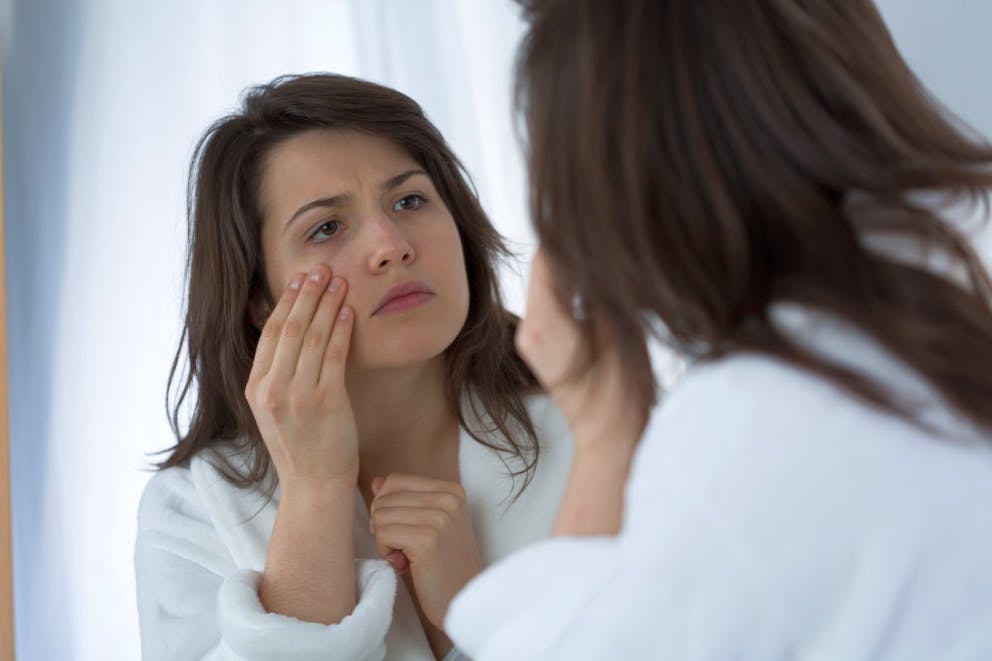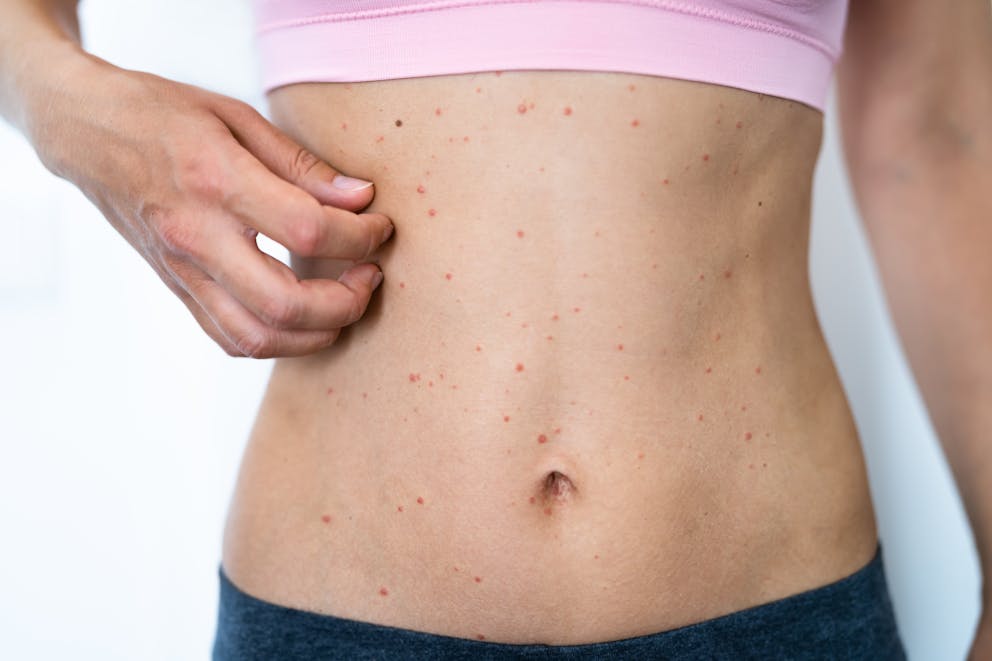Keto Rash is a Bile Deficiency
I know the struggle all too well. You started the keto diet, excited for the benefits, but then it hits you - the dreaded keto rash. Red, itchy, and inflamed skin that just won't quit. Trust me, I've been there.
But here's the good news: there are ways to heal your skin and say goodbye to keto rash for good. Hey there, I know firsthand how frustrating keto rash can be. I've been in your shoes, dealing with the itchiness and embarrassment.
But don't worry, we're in this together! I'm here to share my insights and the most effective solutions I've discovered. Say goodbye to covering up and hello to feeling confident in your own skin again. Let's dive in and take control of your keto rash once and for all.
Understanding Keto Rash and Its Connection to Diet
Plenty of people have hopped on the ketogenic diet trend, lured by the potential health benefits like shedding pounds and keeping blood sugar in check. But there's a surprising downside that some dieters encounter: the dreaded keto rash.
Keto rash, also known as prurigo pigmentosa, is a rare skin condition characterized by itchy, red bumps that typically appear on the neck, chest, and back.
While the exact cause of keto rash remains unknown, it is believed to be linked to the dietary changes associated with the ketogenic diet.
The Role of Dietary Fat in Keto Rash
One of the primary factors contributing to the development of keto rash is the increased dietary fat intake. On a ketogenic diet, fat consumption can account for up to 75% of daily caloric intake, significantly higher than the recommended 20-35% in a standard diet.
Imagine your gallbladder and liver as a team of workers in a factory. When you start the keto diet, it's like suddenly doubling their workload. They're responsible for producing and releasing bile to process all the extra fat you're eating.
If they can't keep up with the demand, things can start to go wrong in your digestive system, and this strain may even lead to the onset of keto rash.
Bile Salts and Their Importance
Bile salts, produced by the liver and stored in the gallbladder, play a vital role in the digestion and absorption of dietary fats. These salts help emulsify fats, making them easier for digestive enzymes to break down and absorb.
When the body is adapting to a high-fat diet, the demand for bile salts increases significantly. If the liver and gallbladder are unable to keep up with this increased demand, it can lead to a deficiency in bile salts, which may contribute to the development of keto rash.
Research has shown that individuals following a ketogenic diet are more likely to experience a rash compared to those on a standard diet.
This suggests that the increased fat intake associated with the keto diet may be a contributing factor in the occurrence of keto rash.
The Impact of Gallbladder and Bile Production on Skin Health
The gallbladder and bile production play a crucial role in maintaining overall health, including the health of our skin. When these organs are not functioning optimally, it can lead to various skin issues, including keto rash and other forms of dermatitis.
When bile production is low or the gallbladder isn't functioning properly, the body struggles to digest and absorb crucial nutrients. This can gradually lead to deficiencies that often manifest as skin issues.

Vitamin Deficiencies and Skin Health
Bile is essential for the absorption of fat-soluble vitamins, such as vitamins A, D, and E. These vitamins play a vital role in maintaining healthy skin, and deficiencies can lead to various skin issues.
Picture this: vitamin A, the skin cell's best friend, helping it grow and heal. Vitamin D, the gentle guide, making sure skin cells develop just right. And vitamin E, the mighty shield, protecting your skin from damage and inflammation.
But when bile production slows down, your body might have trouble absorbing these essential vitamins, which could lead to skin issues like keto rash.
Detoxification and Skin Conditions
Bile isn't just important for absorbing nutrients - it's also a vital player in liver detoxification. As your liver filters out toxins and waste products, bile steps in to help flush them out of your body via the digestive system.
When bile production is insufficient, toxins may accumulate in the body, leading to inflammation and oxidative stress. This can manifest as various skin conditions, including rashes and dermatitis.
In some cases, gallbladder removal or bile duct problems have been associated with the development of prurigo pigmentosa, the medical term for keto rash.
Practical Strategies to Prevent and Treat Keto Rash
If you are following a ketogenic diet and experiencing symptoms of keto rash, there are several strategies you can implement to prevent and treat this condition.
By making dietary adjustments and incorporating specific supplements, you can support your body's digestive system and alleviate the symptoms of keto rash.
Incorporating Purified Bile Salts
If you're looking to support fat digestion and prevent keto rash, consider incorporating purified bile salts into your diet.
Derived from ox or bovine bile, these supplements can help compensate for any deficiencies in bile production, enabling your body to break down and absorb fats more efficiently.
Bile salts that have been purified work by breaking fats into smaller pieces, which allows digestive enzymes to do their job more effectively. As a result, your gallbladder and liver don't have to work as hard, and you're less likely to get keto rash.
To ensure you're getting the most out of your supplement and staying safe, opt for top-notch, pure bile salts.
The Importance of Vitamin B2
Want to keep your skin glowing and your body burning fat efficiently? Make sure you're getting enough vitamin B2, also known as riboflavin. This nutrient is a key player in the enzymatic reactions that help your body metabolize fats properly.
When following a high-fat diet like the ketogenic diet, the body's requirement for vitamin B2 increases. A deficiency in this nutrient can lead to impaired fat metabolism and skin issues, including a condition called pellagra, which can cause skin rashes and inflammation.
To prevent vitamin B2 deficiency and support skin health, consider incorporating foods rich in riboflavin, such as eggs, lean meats, green vegetables, and dairy products.
Supplementation with vitamin B2 may also be beneficial, especially for those with higher requirements or limited dietary sources.
Balancing Fat Intake with Digestive Capacity
While the ketogenic diet emphasizes high fat intake, it is essential to balance this with your body's digestive capacity.
Consuming excessive amounts of fat without sufficient bile production can overwhelm the digestive system, leading to discomfort and increasing the risk of developing keto rash.
To prevent this, gradually increase your fat intake when transitioning to a ketogenic diet, allowing your body time to adapt and increase bile production.
Additionally, consider incorporating medium-chain triglycerides (MCTs) into your diet, as these fats are more easily digested and absorbed than long-chain triglycerides in most dietary fats.
By implementing these practical strategies and supporting your body's digestive system, you can reduce the likelihood of developing keto rash and enjoy the potential benefits of a well-formulated ketogenic diet.

Keto Rash Relief
Experiencing a rash on the keto diet can be both uncomfortable and concerning. This skin reaction, often known as the keto rash, arises from the body's metabolic shift into ketosis.
To alleviate symptoms, consider incorporating more carbohydrates gradually or applying soothing skin treatments. Hydration and proper hygiene can also aid in reducing the rash's severity.
Understanding the gallbladder's function can be crucial in this context. The gallbladder plays a pivotal role in fat digestion by storing and concentrating bile, which aids in the breakdown of fats consumed on a keto diet.
Addressing any gallbladder issues can enhance your overall keto experience and contribute to more precise, healthier skin.
For those asking "what does the gallbladder do," it's essential to recognize its importance in maintaining digestive health, particularly on high-fat diets like keto.
Conclusion
Keto rash may be a frustrating side effect of the keto diet, but it doesn't have to derail your health journey. By understanding the causes and implementing the right remedies, you can soothe your skin and find relief from itching and inflammation.
Remember, everyone's skin is different, so what works for one person may not work for another. Don't be afraid to experiment and find the solutions that work best for you. And if your symptoms persist or worsen, always consult with a healthcare professional.
Your skin is a reflection of your overall well-being, and you're doing everything right to keep it looking its best. Keto rash may be a temporary obstacle, but with the strategies you've learned, it won't hold you back for long.
Supporting Data
https://pubmed.ncbi.nlm.nih.gov/15672710/
https://pubmed.ncbi.nlm.nih.gov/31205990/
https://www.ncbi.nlm.nih.gov/pmc/articles/PMC5472252/
https://pubmed.ncbi.nlm.nih.gov/3972148/
https://en.wikipedia.org/wiki/Cholestatic_pruritus
https://www.cureus.com/articles/27625-facial-prurigo-pigmentosa-after-bariatric-surgery#!/
Previous blog
Why Being Fat Weakens Your Immune SystemNext blog
Keto Spaghetti Squash Carbonara
Popular
08/21/2024
55K views
02/23/2025
46.3K views
11/18/2024
277.5K views
03/18/2024
11/21/2022




